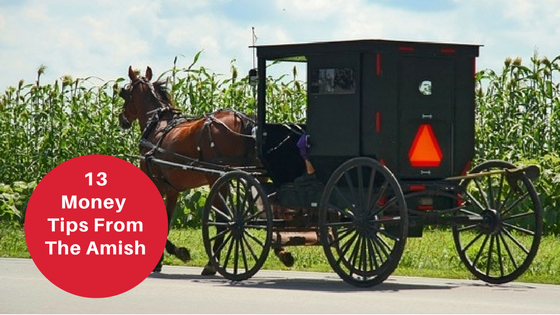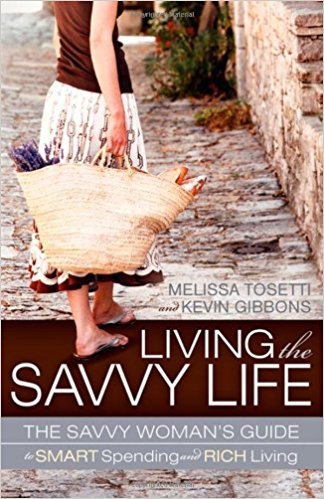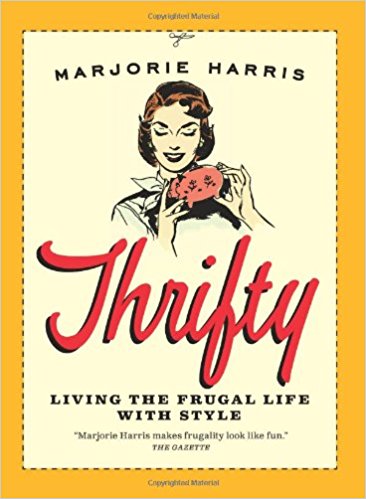Not quite. Price isn’t always the best measure for comparison because insuring your home is a big deal: It’s not just protecting the four walls and the roof, but also all of your belongings and yourself too, in case someone slips on your front steps or is bitten by your dog. As such, stability and quality of service need to factor into your decision. Chances are you won’t care that you saved $10 a month if your insurer drops the ball after a burglary, or can’t deliver on a claim post-hurricane.
The hardest part of finding cheap homeowners insurance is doing your due diligence: getting quotes from a handful of providers to find which ones have the best rates for you. Rates vary widely from person to person, house to house, and location to location, and unexpected things can affect yours: basic demographics, home-specific upgrades, swimming pools, and certain dog breeds — even your credit score.
Your rate will be different from your neighbor’s rate, even if you live in identical subdivision homes. At the nationwide level, we found a few companies that stood out from the rest, blending service, stability, and value.
- Amica
- Liberty Mutual
- Allstate
Now it’s up to you to compare their rates with the providers in your area. Click here to compare.
We used two criteria to assess the best cheap insurance companies: their services and price-related factors. We looked at each insurer’s availability (discounting companies that did business in fewer than 35 states); financial strength, as measured by independent agencies such as A.M. Best; customer satisfaction, as reflected in studies by J.D. Power and Consumer Reports; and whether the company offered the popular “open perils” coverage also known as HO-3.
To assess price, we looked at the number of discounts offered that can lower premiums, as well as customer satisfaction with their price (measured in the J.D. Power and Consumer Reports studies, as well as Insure.com rankings). Individual quotes, which can vary so widely from person to person, were only given weight in the case of a tie. In addition, their How and When to File a Home Insurance Claim piece walks readers through the important decision-making process that homeowners must face when their house is damaged. It also has a user-friendly flowchart that serves as a visual guide.
We’re big fans of Amica, and so are its customers. The company reigns in customer service studies, which means you’re less likely to encounter any runaround after submitting a claim. Customers are also very happy with their premiums relative to the level of coverage and service they receive. When we hunted down quotes in our all-up review of best homeowners insurance companies, Amica consistently came in cheaper than other insurers.
But will Amica be cheapest for you? Maybe; maybe not. Admittedly, the company doesn’t offer as many discounts as some of its competitors, which will dole out better rates for everything from storm shutters to deadbolts. However, because it sells direct to customers, local agents aren’t taking a cut of profits via commissions, which means the company can pass those savings onto you.
Liberty Mutual
Liberty Mutual really shines when it comes to discounts: You can save for all sorts of reasons, including bundling your home insurance with (for example) auto insurance, staying claims-free, purchasing a new home or renovating an old one, and getting a new quote before your old policy expires.
Compared to Amica, customers aren’t quite as satisfied with Liberty Mutual’s value. They may pay less, but some customers feel they don’t get as much for their money. For homeowners who never have to make a claim, that’s no biggy. But who ever plans on making a claim? That said, getting a quote will help you see whether Liberty Mutual’s discounts stack up significantly for you.
Allstate
Like Liberty Mutual, Allstate has a wide range of home insurance discounts. They include popular price breaks for bundling policies and staying claims-free, as well as not-so-common discounts for not smoking and for being a new customer.
Also like Liberty Mutual, customers are divided on whether Allstate is a good value for the money: Some are satisfied; others aren’t. You’ll need a quote to see whether Allstate can deliver you the lowest rate.
Other Companies to Consider
We only considered companies that had a nationwide (or near-nationwide) reach, but customers are also big fans of smaller companies such as Erie, Auto-Owners, and Auto Club of Southern California (AAA). If they service your region, definitely get a quote. If you’re military, check out USAA, which customers routinely laud for its value and service. Click here to compare rates.
Several factors influence your home insurance rates. The most obvious include your home’s location, age, and construction type. Newer homes in areas with a low risk of natural disasters or crime are the cheapest to insure. But the list of things that affect what you pay goes on and on, which is why it’s especially important to get more than one quote.
Unfortunately, most of these things are beyond your control (unless you want to move). But there are still a few strategies you can use to reduce your home insurance bill.
First, you’ll need to calculate the full cost of replacing your home in the event of a total loss. This is the amount it would cost to rebuild your home in the same location using similar materials at current labor costs. This number could be vastly different than your home’s market value, experts warn. A professional estimate can help if you’re unsure.
Second, you need enough to cover your possessions. A rule of thumb is a dollar amount equal to between 50 and 75 percent of what it would cost to replace the structure of your home. So, if you figure rebuilding would cost $250,000, you’ll want at least $125,000 to cover your belongings. Conducting a home inventory by listing important items and their values can help you arrive at a more exact number, and remember expensive possessions such as jewelry and fine art may require add-on coverage.
Third, you’ll need to think about liability — that is, what you’ll be responsible for if someone is hurt on your property. The minimum typically included in a standard policy is $100,000, but experts often recommend $300,000 to $500,000, according to the Insurance Information Institute.
Finally, think about special situations, like where you would live if a natural disaster destroys your home. A standard policy might provide 20 percent of your rebuild cost for you to use on temporary housing, but you may have the option to add coverage. Also consider whether your home is at risk for disasters not covered by standard home insurance: Floods and earthquakes are often left out. In these cases, you’ll need separate policies to protect your home.
Step 2: Be Careful of ‘Actual Cash Value’
Even after you’ve determined a dollar amount for coverage, you’ll need to choose among three standard coverage levels for your home insurance policy:
- Actual Cash Value. This is the least expensive level of home insurance because it factors in the depreciation of your home and belongings, decreasing what these things are worth.
- Replacement Cost. This type of home insurance doesn’t factor in depreciation, but payouts are subject to policy limits.
- Guaranteed Replacement Cost. Like replacement-cost insurance, guaranteed replacement doesn’t factor in depreciation. However, it does allow you to exceed your policy limits, paying whatever it takes to replace your home and belongings. These policies are the most expensive and might be hard to find. Some insurers offer “extended replacement cost policies” instead, which pay up to 120 percent or 125 percent of your coverage amount.
Choosing actual cash value can indeed save you money on your premiums, but it could be at a steep cost in the event of a claim. Think about the shiny new TV you bought a few years ago. It’s still your pride and joy, but because it’s a few years old, your insurer isn’t going to pay you anything near what it costs to replace it with a new one in the event of a claim. Extend that principle to all of your other belongings and you’ll know why most experts recommend a replacement-cost policy instead.
Step 3: Lower That Deductible… Maybe
As with most types of insurance, the higher your deductible, the lower your monthly bill. When you make a claim, your deductible is the amount you agree to pay your insurance company before your coverage kicks in. Going as high as you can comfortably afford in the event of a claim can mean major savings. Raising your deductible from $250 to $1,000 can save you as much as 24 percent, according to the American Institute of Certified Public Accountants. A $5,000 deductible can save you as much as 37 percent.
Just remember that raising your deductible only makes sense if you have savings to pay the higher amount in the event of a claim. Hello, emergency fund.
Step 4: Think Discounts, Discounts, Discounts
No, there aren’t as many home insurance discounts as there are car insurance discounts, and the ones that do exist may not be heavily advertised. Make sure you ask if all applicable discounts have been applied when you’re getting a quote.
The most common discount is for multiple policies, otherwise known as bundling. Your insurer would love all your insurance business — home, auto, and life — and may give you a break on each policy because of it. But don’t assume that staying with the same company is automatically your cheapest option. Compare whether you’ll actually be paying less overall with the same company than you would with policies elsewhere. (You guessed it: Get some quotes!)
Step 5: Make Your Home a Safe Haven
You may feel safe at home, but it’s time to think like an insurance agent. That means adding as many safety features that are reasonable and eliminating risky elements.
Standard safety features such as deadbolts, smoke detectors, carbon-monoxide detectors, and fire extinguishers may earn you a small discount. A security system can save you even more, depending on your insurer. Of course, security systems aren’t cheap, and you’ll want to balance the price of having one with any potential break (if there is one) on your insurance premium.
If your home is in a disaster-prone area, check on special modifications you can make to further reduce your premiums. Adding features such as storm shutters, storm-resistant garage doors, a stronger roof, and shatter-proof windows can help you save, too.
Finally, you may want to avoid the things that make insurance agents wake up in a cold sweat: swimming pools, pit bulls, trampolines, etc. The best things in life can actually be liabilities, and while they may be worth it, they will raise your rates.
Step 6: Polish That Credit Score
We love to preach the importance of a good credit score at The Simple Dollar, and we’ll do it some more.
Unless you live in the few states that prohibit it (California, Maryland, and Massachusetts), most insurers consider your credit score when calculating your premium — often with dramatic results. It’s a controversial practice, but the logic is if you have excellent credit, you’re less likely to file a claim and are rewarded with lower premiums; if you have bad credit, you’re seen as a greater risk.
Unfortunately, building good credit can be a time-consuming process, and it won’t be something you can do at the last minute before you buy insurance. However, given the range of financial dealings your credit can impact, it’s worth it to keep working on it.
Step 7: Always Shop Around
You’ll need to shop around to find the cheapest home insurance. Don’t assume a certain provider will be the cheapest home insurance company just because it was for your family or friends. Your home and circumstances are different and your bill will be different too.
Some companies will require you to call. Don’t be shy — it typically doesn’t take very long. Online quote tools will help you save time everywhere else, and some (like ours!) even allow you to compare quotes from several companies at once. Happy quoting!














 RSS Feed
RSS Feed














